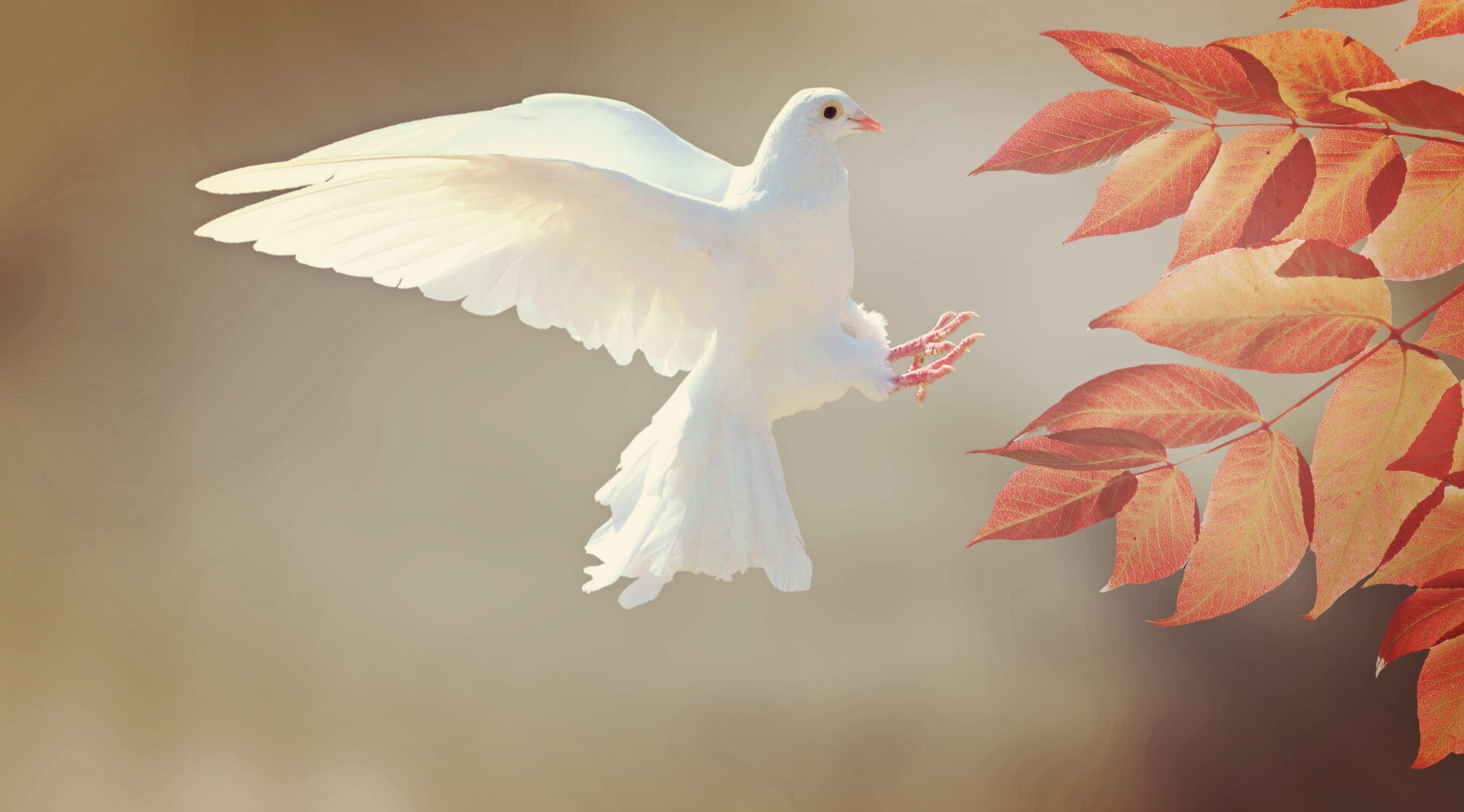As I reflect on the readings for this Fifth Sunday of Lent, I am struck by three things.
The first theme that strikes me is that of GRIEF or LOSS.
Once upon a time, we would have referred to these next two weeks as Passiontide: a time during which we enter more deeply into the inexorable movement of Jesus toward his suffering, crucifixion, and death.
We’ve already been experiencing a hint of this: since Ash Wednesday, we haven’t used that beautiful “A” word that signifies “Praise God,” or “Praise the Lord,” substituting “Praise to you, Lord Jesus Christ, King of endless glory.” We have also been fasting from saying the Gloria at Sunday Mass. How my ears yearn for the beautiful sound of those bells at the Easter Vigil when we finally sing with full voice that great angelic hymn, overflowing with praise and joyfulness!
But I’m getting a bit ahead of myself….
Back to Passiontide: an opportunity, as Father Edward Mazich, a monk from Sait Vincent Archabbey, reminds us, to “unite ourselves with Christ in his hours of darkness that we might find hope and light through him in our times of suffering.”
In John’s Gospel, we hear Jesus saying:
“Amen, amen, I say to you,
unless a grain of wheat falls to the ground and dies,
it remains just a grain of wheat;
but if it dies, it produces much fruit.”
Scripture scholars tell us that Amen is a Hebrew word meaning “It is true.” In the gospels, Jesus uses the word to emphasize the importance of what follows. When he says it twice: Amen! Amen! it is as if to say: Listen up: this is really important!
So read it again, in case your attention wasn’t as fully focused at it could have been:
“Amen, amen, I say to you,
unless a grain of wheat falls to the ground and dies,
it remains just a grain of wheat;
but if it dies, it produces much fruit.”
The image of the seed dying in the gospel has always seemed a paradox to me. Something has to die in order for something to live? Why? How is that? How are we to understand this?
American lawyer and social justice activist, Bryan Stevenson, once wrote, “Our brokenness is also the source of our common humanity, the basis for our shared search for comfort, meaning, and healing. Our shared vulnerability and imperfection nurtures and sustains our capacity for compassion.”
I recently had an opportunity to attend a webinar during which Sister Mary Jo Nelson, past President of Our Lady of Victory Missionary Sisters shared her thoughts on loss and grief. She observed that these “can be God’s way of inviting us into a new, deeper, and intimate place with God. We are called again to embrace – and in the paschal mystery – to allow this journey to deepen in us… There might be new questions or as yet unnamed questions… There is an opening for a new longing for God.”
This capacity for compassion and a new longing, for me, hearken back to that beautiful phrase from Jeremiah in the First Reading, which brings me to the second theme that strikes me from our readings….COVENANT.
“The days are coming, says the LORD,
when I will make a new covenant with the house of Israel
and the house of Judah.”
And later in that passage….
“I will place my law within them and write it upon their hearts;
I will be their God, and they shall be my people.”
Isn’t this a beautiful image? A new covenant, written upon our hearts. This wonderful promise of a new relationship with God – no matter what.
Old Testament scholar and theologian Walter Brueggemann once noted, “The Easter question for us is not whether you can get your mind around the Resurrection, because you cannot. Rather the question is whether you can permit in your horizon new healing power, new surging possibility, new gestures to the lame, new ways of power in an armed, fearful world, new risk, new life, leaping, dancing, singing, praising the power beyond all our controlled powers.”
And all this leads, it seems to me, to the third theme that I notice in our readings: HOPE.
What is hope? In her famous poem, ‘Hope’ is the thing with feathers, Emily Dickinson, wrote:
Hope is the thing with feathers –
That perches in the soul –
And sings the tune without the words –
And never stops – at all …
That “never stops – at all” part kind of stopped me in my tracks the first time I read it. It really got me to thinking about this thing called Hope.
In Grateful Hope as an Orientation of the Heart, author and former chaplain, Joe Primo, has written that “Hope is an orientation of the heart that can endure all things when properly tended because our heart space is where we discover meaning. Grateful hope guides us back from despair.”
Primo is the author of the book, What Do We Tell the Children?: Talking to Kids About Death and Dying, so I’m thinking he knows a thing or two about grief. Here’s how he spoke about his experience: “I learned from grieving kids that grateful hope is a stance a grieving child — and the child in us — can cultivate. In life, we can acknowledge pain while also trusting that pain is not where the story ends. In fact, it is often where the story begins, perched on the soul and singing the tune of a heart that bent without breaking.”
“In life, we can acknowledge pain while also trusting that pain is not where the story ends.” I hear echoes of Resurrection in this.
So, Grief and Loss; Covenant; Hope: Where does all this bring us?
In his book, Reality, Grief, Hope, Walter Brueggemann writes of what he refers to as Three Urgent Prophetic Tasks. In Sister Mary Jo Nelson’s words: Name the reality, name the grief (the losses), name the Promise of God.
And as I grapple with all this, I wonder:
Maybe this is the crux of our Community life together: not only must the grain of our individual lives fall to the ground and die in order to bring forth fruit; so too must the grain of our life together as a Community fall to the ground and die. Ouch! It hurts. That’s painful.
And yet, it seems especially appropriate as we journey forward with our future planning through Scenario Building: telling stories of what we want our future to look like..
As Sister Mary Jo Nelson reminds us, “Working through loss and grief prepares the space for transformation” – realizing that “The willingness to consider possibility,” as Dr. Rachel Naomi Remen has said, “requires a tolerance of uncertainty.”
Seemingly impossible tasks? Our own St. Benedict, in the Prologue, assures us that, “What is not possible to us by nature, let us ask the Lord to supply by the help of his grace.”
So, however we envision our future…we can be sure of this:
Amazing surprises await us, the likes of which we could not have imagined! This is God’s Promise…this is the basis of our HOPE.
So… Grief and Loss…Covenant and Promise…An Orientation of Hope….
My prayer for each of us and all of us: May we follow the path of hope.
And may we together, with energy of heart, journey to Easter JOY! Amen. Amen.

